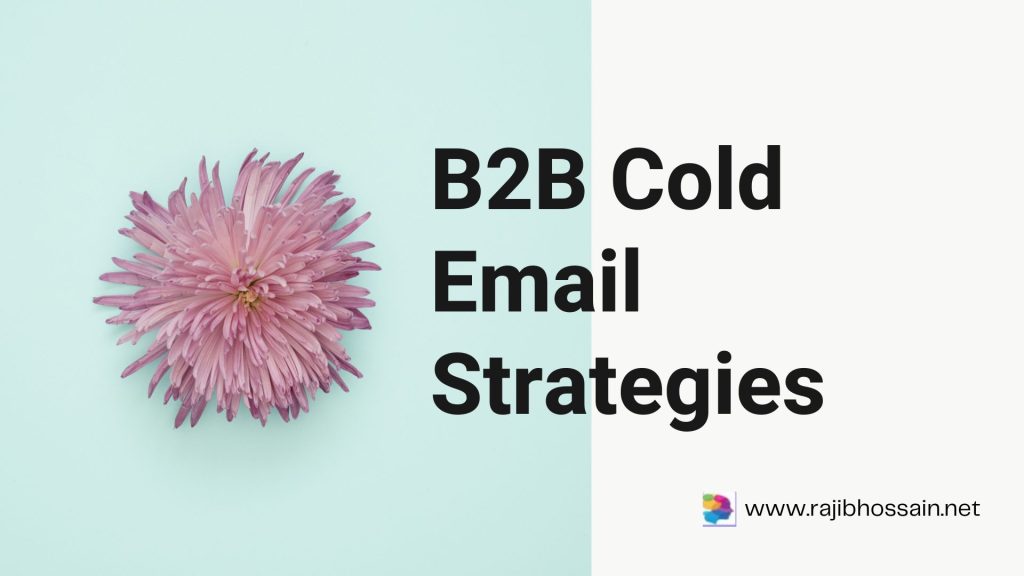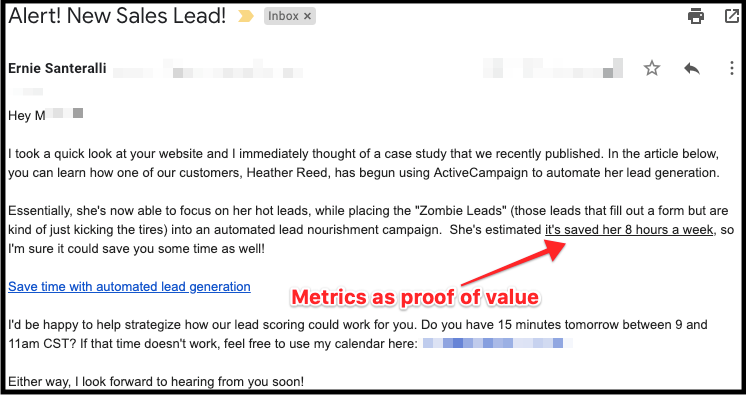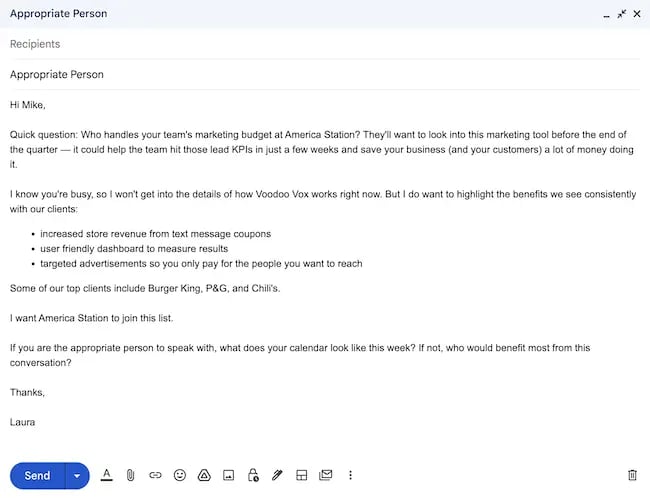
Introduction
B2B cold emails are a strategic approach to reach potential business clients directly. These emails aim to build connections, introduce products or services, and generate leads. Crafting an effective B2B cold email requires precision, personalization, and a compelling value proposition.
The content should be concise, engaging, and relevant to the recipient’s needs. A strong subject line captures attention, while a clear call to action drives the desired response. By adhering to best practices, B2B cold emails can open doors to new business opportunities and foster long-term relationships.

Credit: www.saleshandy.com
The Art Of Cold Emailing
Cold emailing is not just about sending emails. It’s an art. You need to connect with strangers. You must grab their attention. You aim to convert them into clients. This process demands skill and strategy.
Crafting A Compelling Subject Line
Your subject line is the first thing they see. It must be compelling. A good subject line can make them open the email. A bad one can send it to the trash.
- Keep it short and sweet. Aim for 5-7 words.
- Use action words. Make them feel urgent.
- Avoid spammy words like “free” or “urgent”.
- Personalize it. Use their name or company name.
Example subject lines:
| Good Subject Line | Bad Subject Line |
|---|---|
| “John, let’s grow your sales by 20%” | “Increase your sales now” |
| “Mary, a quick question about your website” | “Your website needs help!” |
Personalization At Scale
Personalization is key. But how do you do it at scale? Here are some tips:
- Use merge tags. Insert names, company names, and other details.
- Segment your list. Group by industry, size, or needs.
- Write different templates. Tailor them to each segment.
Example of a personalized email:
Hi [First Name],
I noticed [Company Name] is growing fast. Congrats on your success! I believe our [Product/Service] can help you reach the next level. Let's chat.
Best,
[Your Name]Using these tips, you can send many emails. Yet, each one feels personal. This increases your chances of a reply.
Identifying Your Target Audience
Identifying your target audience is crucial in B2B cold emailing. It ensures your message reaches the right people. This improves your chances of success. You need to know who to contact. It involves careful research and segmentation.
Segmentation For Precision
Segmentation helps you reach the right audience. Divide your audience into specific groups. This is based on certain characteristics. These could be industry, company size, or job roles.
Here is a simple table to understand segmentation:
| Segment | Characteristics |
|---|---|
| Industry | Technology, Healthcare, Finance |
| Company Size | Small, Medium, Large |
| Job Roles | CEO, Manager, IT Specialist |
Segmenting your audience ensures that your message is relevant. People are more likely to respond to relevant emails. This boosts your conversion rates.
Understanding Decision-makers
Understand who makes decisions in your target companies. These are the people you need to reach. Decision-makers have the power to take action. They can approve your proposals or make purchases.
Here are steps to identify decision-makers:
- Research the company’s hierarchy.
- Find out who heads each department.
- Use LinkedIn to find their profiles.
- Check their roles and responsibilities.
Understanding decision-makers helps you craft better emails. You can address their specific needs. This makes your email more effective.
Remember to be clear and concise. Decision-makers are busy people. They appreciate short, to-the-point emails.
Crafting Your Message
Crafting an effective B2B cold email is essential. A well-crafted message can open doors and create new opportunities. Your email should be clear, concise, and action-oriented. Let’s dive into the key elements of crafting your message.
Value Proposition Clarity
Your email must highlight your value proposition. Explain why your offer is unique. Make it easy for the reader to understand your benefits. Use simple words and short sentences. Here is an example:
- Good: “Our software saves you 10 hours a week.”
- Bad: “Our state-of-the-art solution enhances productivity and efficiency.”
Keep your message focused on what matters to the recipient. Answer the question: “What’s in it for me?”
Concise And Action-oriented Content
Keep your email short and to the point. Busy professionals don’t have time for long emails. Use bullet points for easy reading:
- Introduce yourself briefly.
- State your value proposition clearly.
- Include a call to action.
Here is a sample structure:
Hi [Recipient],
I am [Your Name] from [Your Company].
Our [Product/Service] can help you [Benefit].
Are you available for a quick call next week?
Best,
[Your Name]
Always include a clear call to action. Make it easy for the recipient to respond. Ask for a meeting, a call, or their feedback.

Credit: www.leadfeeder.com
Timing Your Outreach
Timing is critical in B2B cold email outreach. Sending emails at the right time can boost open rates. It can also improve response rates. Understanding the best days and times to send emails is essential. Crafting a good frequency and follow-up strategy is equally important.
Best Days And Times To Send Emails
Studies show that certain days and times work best for sending emails. The table below highlights the best days and times to send B2B emails:
| Day | Time |
|---|---|
| Tuesday | 10 AM |
| Wednesday | 11 AM |
| Thursday | 9 AM |
Sending emails on these days can lead to higher open rates. Avoid sending emails on Mondays and Fridays. People are often busy or planning their weekends.
Frequency And Follow-up Strategy
Don’t overwhelm recipients with too many emails. A balanced approach is key. Below is a simple frequency and follow-up strategy:
- First Email: Send on a Tuesday at 10 AM.
- Second Email: Wait 3 days. Send a follow-up on Friday at 10 AM.
- Third Email: Wait 5 days. Send another follow-up the next Wednesday at 11 AM.
Keep follow-up emails short and to the point. Use bullet points to highlight key benefits. Personalize each email to make it more engaging.
Below is a sample follow-up email template:
Subject: Quick Follow-Up on Our Previous Email
Hi [Recipient's Name],
I wanted to follow up on my previous email about [Your Product/Service].
Here are the key benefits:
- Benefit 1
- Benefit 2
- Benefit 3
Looking forward to your thoughts.
Best,
[Your Name]
Following this strategy can help you connect better with prospects. Keep refining your approach for the best results.
Subject Lines That Stand Out
The subject line is the first thing your recipient sees. It must grab attention. A catchy subject line increases the chance of your email being opened. Crafting the perfect subject line can be tricky. But with a few tips and tricks, you can make it work.
A/b Testing For Optimization
A/B testing helps you find the best subject line. By testing different versions, you see which one performs better. Here’s how to do it:
- Write two or more subject lines.
- Send them to different segments of your list.
- Compare open rates.
- Choose the best performer.
Avoiding Spam Triggers
Avoiding spam triggers is crucial. Certain words and phrases can send your email to the spam folder. Here are some tips:
| Tip | Explanation |
|---|---|
| Avoid ALL CAPS | All caps can be seen as shouting and spammy. |
| Limit Exclamation Marks | Too many exclamation marks look unprofessional and spammy. |
| Be Honest | Do not use misleading subject lines. |
| Use Personalization | Include the recipient’s name or company. |
The Power Of Personalization
Personalization can transform your B2B cold email campaign. Tailored messages engage recipients more effectively. Personalized emails show you value the recipient. This can lead to higher response rates and better conversions.
Using Personalized Tokens
Using personalized tokens in your cold emails is crucial. These tokens include the recipient’s name, company, or industry. Here’s a quick example:
Hi [First Name],
I noticed [Company Name] is growing fast in [Industry].
These small touches make your email more relevant. People prefer emails that speak directly to them. Tools like mail merge can automate this process. This saves time and ensures accuracy.
Research For Relevance
Researching your prospects is key. Understand their needs and challenges. This makes your email more valuable to them. Here are the steps to follow:
- Identify your target audience.
- Find information on their pain points.
- Tailor your message to address these issues.
Use platforms like LinkedIn for your research. Look at their recent posts and activities. This helps you craft a message that resonates.
For instance, if they posted about a recent project, mention it:
Hi [First Name],
I saw [Company Name] recently completed [Project]. Congratulations!
This shows you’ve done your homework. It makes your email stand out from generic ones.
| Step | Action |
|---|---|
| 1 | Identify Target Audience |
| 2 | Find Pain Points |
| 3 | Tailor Message |
Follow-up Tactics
Effective follow-up tactics are crucial in B2B cold emailing. They help maintain interest, build rapport, and convert prospects. A well-crafted follow-up can make a significant difference in your outreach efforts.
Persistence Without Annoyance
Persistence is key in B2B cold emailing. Yet, it’s essential not to cross the line into annoyance.
Tips for balancing persistence:
- Space out your emails by at least 3-5 days.
- Use varied subject lines to keep the interest alive.
- Always offer value in each email.
Consider setting a follow-up schedule. Here’s an example:
| Day | Action |
|---|---|
| Day 1 | Send initial email |
| Day 4 | First follow-up |
| Day 9 | Second follow-up |
| Day 14 | Third follow-up |
Leveraging Multi-touch Points
Using multiple touchpoints increases the chances of a response. Emails are just one of many ways to engage.
Consider these touchpoints:
- LinkedIn connection and message
- Phone call
- Social media interaction
Combining these methods ensures you stay on the prospect’s radar. It shows you are genuinely interested in connecting.
Here’s a sample multi-touch strategy:
| Day | Action |
|---|---|
| Day 1 | Send initial email |
| Day 3 | Connect on LinkedIn |
| Day 5 | Follow-up email |
| Day 7 | Call prospect |
| Day 10 | Message on LinkedIn |
This approach ensures your follow-ups are effective and well-received. It keeps the communication diverse and engaging.
Analyzing And Adapting
In the world of B2B cold emails, analyzing and adapting is crucial. It helps improve your email campaigns. This process involves understanding key metrics. It also requires making iterative improvements to your strategy.
Tracking Key Metrics
Tracking key metrics is the first step in analyzing your cold emails. Key metrics help you understand how your emails perform. Here are some important metrics to track:
- Open Rate: The percentage of recipients who open your email.
- Click-Through Rate (CTR): The percentage of recipients who click on links in your email.
- Response Rate: The percentage of recipients who reply to your email.
- Bounce Rate: The percentage of emails that fail to reach the recipient.
Use tools like Google Analytics or email marketing platforms to track these metrics. Create a table to monitor changes over time:
| Metric | Week 1 | Week 2 | Week 3 | Week 4 |
|---|---|---|---|---|
| Open Rate | 20% | 22% | 25% | 27% |
| Click-Through Rate | 5% | 6% | 8% | 10% |
| Response Rate | 2% | 3% | 4% | 5% |
| Bounce Rate | 1% | 1% | 1% | 1% |
Iterative Improvements
Iterative improvements involve making small changes and testing them. This helps you find what works best for your audience. Follow these steps for iterative improvements:
- Analyze your key metrics to identify areas of improvement.
- Make a small change to your email strategy.
- Send out your updated email and track the results.
- Compare the new results to your previous metrics.
- Repeat the process with new changes.
Examples of changes you can make:
- Adjust your subject line to increase open rates.
- Modify your call-to-action (CTA) to boost click-through rates.
- Personalize your email content to improve response rates.
By continuously analyzing and adapting, you will refine your B2B cold email strategy. This leads to better engagement and higher success rates.
Tools And Technologies
Effective B2B cold emailing relies on the right tools and technologies. These tools streamline processes, improve efficiency, and increase success rates. Let’s explore key tools and technologies that enhance B2B cold emailing.
Email Automation Software
Email automation software helps you manage and send bulk emails. It saves time and ensures consistency. Here are some benefits of using email automation software:
- Scheduling: Schedule emails to send at the best times.
- Personalization: Tailor emails to each recipient.
- Tracking: Monitor open and click rates.
Popular email automation tools include:
- Mailchimp
- SendinBlue
- HubSpot
Integration With CRM
Integrating email tools with CRM systems is crucial. This integration ensures data consistency and enhances customer relationship management.
Key advantages of CRM integration include:
- Data Sync: Sync customer data automatically.
- Segmentation: Segment contacts based on behavior.
- Follow-ups: Automate follow-up emails.
Here are some popular CRM systems:
- Salesforce
- Zoho CRM
- Microsoft Dynamics
Integrating these tools can boost your B2B cold email efforts. It streamlines workflows and makes your campaigns more effective.
Legal Compliance And Ethics
Sending cold emails in a B2B environment requires careful attention to legal compliance and ethics. Understanding the rules and maintaining professionalism can help you avoid fines and build trust.
Adhering To Can-spam Act
The CAN-SPAM Act is a key law for email marketing in the US. It sets rules for commercial emails and gives recipients the right to stop receiving them. Adhering to this law is crucial.
- Clear Subject Lines: Your subject line must reflect the content.
- Identify as an Ad: Indicate that your message is an advertisement.
- Valid Postal Address: Include your valid physical postal address.
- Easy Unsubscribe: Provide a clear way to opt out of future emails.
- Honor Opt-Outs: Honor opt-out requests promptly.
Maintaining Professionalism
Professionalism in cold emailing builds credibility and trust. It ensures your message is well-received and effective.
- Polite Tone: Use a respectful and polite tone in your emails.
- Personalization: Customize the email to address the recipient by name.
- Clear Purpose: State the purpose of your email clearly and concisely.
- Proofread: Check for grammar and spelling mistakes before sending.
- Follow-up: Send polite follow-up emails if you don’t get a response.
| Legal Requirement | Best Practice |
|---|---|
| CAN-SPAM Compliance | Follow all CAN-SPAM rules. |
| Respectful Tone | Use a polite and respectful tone. |
| Clear Subject Line | Make your subject line clear and honest. |
| Opt-Out Options | Provide easy ways to unsubscribe. |

Credit: blog.hubspot.com
Frequently Asked Questions
Is B2b Cold Email Legal?
Yes, B2B cold email is legal. Ensure compliance with laws like GDPR and CAN-SPAM. Always include an opt-out option.
Do Cold Emails Work For B2b?
Yes, cold emails can work for B2B. Success depends on targeting, personalization, and value proposition. Keep messages concise and relevant.
How To Write A Cold Email For B2b Sales?
To write a cold email for B2B sales, personalize the subject line. Introduce yourself briefly. Highlight a specific problem and offer a solution. Include a clear call to action. Keep it concise and professional.
How Long Should A B2b Cold Email Be?
A B2B cold email should be concise, around 50-125 words. Focus on a clear message and strong call to action.
Conclusion
Mastering B2B cold email strategies can transform your business outreach. Focus on personalization, clarity, and value. Track your results and refine your approach. With persistence and the right tactics, your cold emails can open doors to valuable partnerships and opportunities.
Start implementing these tips today to see measurable improvements.
